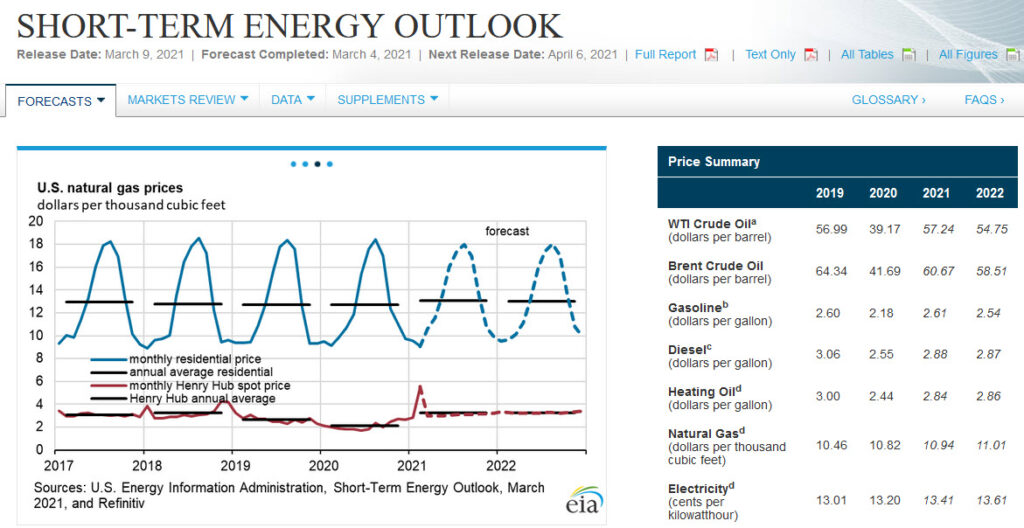Natural gas consumption in the U.S. will drop during 2021, marking a two-years-in-a-row record of low consumption since 2006, the Energy Information Administration forecast in its latest Short-Term Energy Outlook, of this Tuesday.
Firstly, the outlook projects that, while natural gas demand will plunge, its production will rise, mainly due to economic fallout from the coronavirus pandemic still affecting the markets and consumption rates.
Secondly, EIA foresees dry gas production to rise to 91,35 billion cubic feet per day (bcfd) in 2021; and to 92,83 bcfd in 2022, from a baseline of 91,34 in 2020. In contrast, dry gas all time high was in 2019, with 93,06 bcfd.
For the projected gas consumption, EIA estimates a fall to 82,52 bcfd in 2021, and further 81,60 bcfd in 2022, from a baseline of 83,25 bcfd in 2020. In contrast with a high record of 85,15 bcfd in 2019.
As Reuters reports, if the forecast is accurate this would be the first time since 2006 that consumption drops while production increases for two consecutive years. Also, 2022 would be the first time it fall for three years since 1983.
Also recommended for you: Texas governor calls out to correct ERCOT’s pricing error


Natural gas rising prices to boost coal use as it’s cheaper for power generation
Moreover, EIA’s forecast for March, 2021, were higher than its February forecasts of 90,50 bcfd for supply, and 81,71 bcfd for demand.
On the other hand, for liquified natural gas exports, realm in which the U.S. scored high records in 2020, EIA projects new increases. EIA estimates that in 2021 LNG exports will reach 8,29 bcfd, and further 9,22 bcfd in 2022. In contrast with the 6,53 record of 2020.
However, this is lower than the February forecast of 8,46 bcfd in 2021. Coal production will also have a slight increase this year, according to the agency’s estimates. Particularly it will rise to 581,2 million short tons in 2021, and further 610,3 million short tons in 2022.
This would be a considerable increase from 2020’s low record of 539,1 million short tons; in fact, the lowest since 1965. This increase would be attributable to the increasing prices of natural gas, and power companies switching to coal once again in order to cut costs.
Finally, carbon emissions, as a result from this, will rise to 4,843 billion tons in 2021. They will keep rising for next year, 2022, to almost 5 billion tons, as power generators burn more coal. This would be a significant increase from 2020’s average of 4,583 billion tons, the lowest for the U.S. since 1983.

